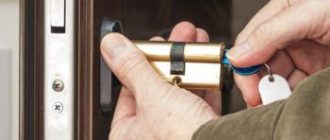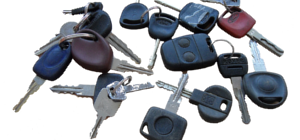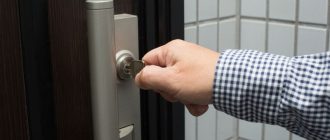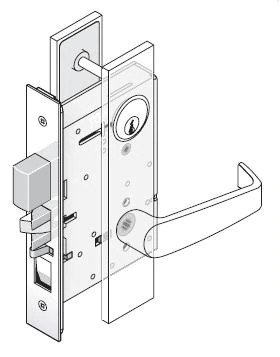
Locks Types
When it comes to securing our homes and belongings, choosing the right lock is of utmost importance. There are various types of locks available on the market, each offering different levels of security and convenience. In this article, we will explore some of the most common types of locks, including cylinder, magnetic, cam, deadbolt, smart, biometric, combination, and electronic locks.
A cylinder lock is a popular choice for residential and commercial properties due to its versatility. It consists of a cylinder mechanism that can be operated using a key from both inside and outside. This type of lock is known for its ease of installation and compatibility with different door materials.
Magnetic locks, on the other hand, use the power of magnetism to secure doors. They are commonly used in high-security areas where immediate access control is required. These locks are exceptionally strong and resistant to tampering, making them suitable for businesses and institutions that prioritize safety.
Cam locks are widely used in cabinets, drawers, and mailboxes. They are relatively simple in design but provide a reliable level of security. These locks consist of a metal plate, or cam, that rotates to lock or unlock the device. They can be easily installed and are an affordable option for securing personal items.
For enhanced security, deadbolt locks are highly recommended. These locks have a solid, reinforced bolt that extends into the door frame, making them resistant to forced entry. Deadbolts come with different security levels, including single cylinder, double cylinder, and jimmy-resistant varieties.
In recent years, smart locks have gained popularity due to their convenience and advanced security features. These locks can be operated remotely using a smartphone, allowing homeowners to monitor and control access to their property. Smart locks often come with additional security measures, such as biometric verification and combination codes.
Biometric locks use fingerprints, retinal scans, or facial recognition to grant access. These locks offer a high level of security as they rely on unique biological characteristics. Combination locks, on the other hand, require a numeric code to be entered for access. They are commonly used for locking safes and other secure compartments.
Finally, electronic locks provide a modern and efficient way of securing doors. These locks use electronic components, such as keypads or card readers, to control access. They offer convenience and flexibility, allowing users to easily change access codes and track entry logs.
With so many types of locks available, it is essential to consider the specific needs of your property and choose a lock that offers the right balance of security and convenience. Whether you opt for a traditional deadbolt or invest in a state-of-the-art smart lock, selecting the right lock will provide you with peace of mind and enhanced security.
Exploring the Different Types of Locks for Enhanced Security
When it comes to securing your property, choosing the right lock is important. There are several types of locks available, each with its own unique features and benefits.
Cylinder Locks: Cylinder locks are common and widely used. They consist of a cylindrical mechanism that allows the lock to be opened with a key. They offer a good level of security and are relatively easy to install.
Cam Locks: Cam locks are often used in cabinets and drawers. They have a rotating cam that locks and unlocks the mechanism. These locks are simple and reliable, offering a moderate level of security.
Padlocks: Padlocks are portable and versatile. They can be used on doors, gates, and other items that need to be secured. Padlocks come in different sizes and can have either a combination or a key lock.
Electronic Locks: Electronic locks use electronic components to control access. They can be operated using a keypad, a key card, or a smartphone app. These locks provide convenience and can offer advanced security features.
Biometric Locks: Biometric locks use unique biological characteristics, such as fingerprints or retinal scans, to grant access. These locks offer a high level of security and are commonly used in high-security areas.
Deadbolt Locks: Deadbolt locks are commonly used on exterior doors. They are resistant to forced entry and provide additional security. Deadbolts can have a single or double cylinder and can be operated with a key or a thumbturn.
Smart Locks: Smart locks are connected to the internet and can be operated remotely. They can be controlled using a smartphone, allowing you to lock and unlock your doors from anywhere. Smart locks often come with additional features, such as activity logs and temporary access codes.
Combination Locks: Combination locks require a specific sequence of numbers or symbols to be entered in order to unlock. They are often used in gym lockers, safes, and other applications where multiple users need access.
In conclusion, choosing the right lock for enhanced security depends on your specific needs and preferences. Whether you opt for a traditional cylinder lock, a high-tech biometric lock, or a convenient smart lock, it’s important to consider the level of security and convenience that each type offers.
Keyless Locks: Advanced Security Measures
Keyless locks are a cutting-edge option for enhanced security. These locks eliminate the need for traditional keys and offer advanced security measures to protect your home or business. Keyless locks come in various types, each with its own unique features and benefits.
One popular type of keyless lock is the combination padlock. This type of lock requires a specific numeric code to open and is commonly used for securing lockers, luggage, or gates. The code can be easily changed, ensuring that only authorized individuals have access.
Another keyless lock option is the cylinder lock. This type of lock operates using a rotating cylinder mechanism that requires a code or swipe card for access. Cylinder locks are commonly used in office buildings and hotels, offering a convenient and secure entry solution.
Smart locks, also known as electronic locks, are another advanced keyless lock option. These locks can be controlled remotely using a smartphone or computer. Smart locks offer features such as temporary access codes, remote locking and unlocking, and activity tracking, providing a high level of security and convenience.
Cam locks are keyless locks commonly used in cabinets or drawers. They operate using a rotating cam mechanism and are typically secured with a small key or a numerical code. Cam locks are ideal for securing confidential documents or valuable items.
Magnetic locks are another type of keyless lock that uses electromagnetism to secure a door. These locks require a key card or a proximity card for access. Magnetic locks are commonly used in commercial or high-security environments, where controlled access is crucial.
Lastly, the deadbolt lock is a classic keyless lock option that provides enhanced security. Deadbolt locks require a knob or thumb-turn to open and are often used as a secondary lock in addition to a traditional key lock. Deadbolt locks are known for their strength and resistance to forced entry.
| Combination Padlock | Requires a specific numeric code for access | Lockers, luggage, gates |
| Cylinder Lock | Operates with a code or swipe card | Office buildings, hotels |
| Smart Lock | Controlled remotely, offers temporary access codes | Homes, businesses |
| Cam Lock | Uses a rotating cam mechanism | Cabinets, drawers |
| Magnetic Lock | Requires a key card or proximity card | Commercial or high-security environments |
| Deadbolt Lock | Requires a knob or thumb-turn for access | Secondary lock in addition to a traditional key lock |
Deadbolt Locks: Classic Security Option
When it comes to ensuring the security of your property, deadbolt locks are a classic and reliable choice. These locks offer enhanced protection and are known for their strength and durability.
A deadbolt lock is a type of lock that is operated by a key or a thumbturn. Unlike other types of locks such as biometric, electronic, or cam locks, deadbolts are mechanical locks that do not require any power source.
Deadbolt locks come in different variations, including single-cylinder and double-cylinder locks. The single-cylinder deadbolt has a cylinder on one side and a thumbturn on the other side, allowing for easy locking and unlocking from the inside. The double-cylinder deadbolt, on the other hand, requires a key to operate from both sides, providing an extra layer of security.
One of the main advantages of deadbolt locks is their resistance to picking and bumping, making them more secure than other types of locks. The design of a deadbolt lock ensures that it cannot be easily manipulated or forced open.
In recent years, deadbolt lock technology has also evolved to include smart deadbolt locks. These locks can be operated using a smartphone or a keypad, allowing for keyless entry and remote access. Smart deadbolt locks offer additional features such as the ability to monitor access, create temporary codes for guests, and integrate with home automation systems.
In conclusion, deadbolt locks are a classic security option that provides enhanced protection for your property. Whether you choose a traditional mechanical deadbolt or opt for a smart deadbolt lock, you can have peace of mind knowing that your property is secure. With their reliability and durability, deadbolt locks remain a popular choice for homeowners and businesses alike.
Electronic Locks: Cutting-Edge Security Features
When it comes to securing your property, electronic locks offer a range of cutting-edge security features that go beyond traditional lock types like the combination, padlock, cylinder, deadbolt, cam, and biometric locks. Electronic locks utilize advanced technology to provide enhanced security and convenience.
One of the key features of electronic locks is their ability to operate without the need for physical keys. Instead, these locks use a variety of electronic methods, such as keycards, key fobs, or even smartphone apps, to grant access to authorized individuals. This eliminates the risk of lost or stolen keys and allows for easy access control management.
Electronic locks often come equipped with additional security measures, such as built-in alarms and tamper-resistant mechanisms. These features provide an extra layer of protection and deter potential intruders.
Another advantage of electronic locks is their ability to integrate with other smart home devices. They can be connected to a central home automation system, allowing homeowners to control and monitor their locks remotely. This enables convenient features such as remotely unlocking the door for guests or receiving notifications when someone enters or exits the property.
Furthermore, electronic locks can utilize biometric technology, such as fingerprint or facial recognition, for even more secure access control. These biometric features ensure that only authorized individuals can gain entry, as biometric data is unique to each person and virtually impossible to replicate.
In conclusion, electronic locks offer cutting-edge security features that go beyond traditional lock types. With advanced technology, convenient access control, integration with smart home devices, and the use of biometric technology, electronic locks provide enhanced security and peace of mind for homeowners and businesses alike.
Padlocks: Portable Security Solutions
Padlocks are one of the most common types of locks used for enhanced security. They are portable, versatile, and can be used in a wide range of applications. Padlocks typically consist of a metal body, a shackle, and a locking mechanism.
There are several types of padlocks available, each offering its own level of security:
1. Cam Locks: Cam locks are commonly used in padlocks for cabinets, drawers, and lockers. They have a simple mechanism where a metal piece called a cam rotates to secure or release the shackle.
2. Biometric Padlocks: These padlocks use biometric technology, such as fingerprints or retinal scans, to provide advanced security. They offer a high level of convenience as there is no need for keys or combinations.
3. Cylinder Padlocks: Cylinder padlocks use a cylinder mechanism, similar to that found in door locks. They are known for their durability and resistance to tampering.
4. Combination Padlocks: Combination padlocks require a unique combination of numbers or letters to unlock. They provide a good level of security and are commonly used in school lockers and gym lockers.
5. Electronic Padlocks: Electronic padlocks use electronic components, such as keypads or RFID technology, to unlock. They offer convenience and can be easily programmed and reprogrammed.
6. Smart Padlocks: Smart padlocks can be operated through a smartphone app. They offer features like remote access, real-time monitoring, and temporary access for guests.
7. Deadbolt Padlocks: Deadbolt padlocks have a solid metal bolt that extends into a strike plate, providing enhanced security. They are commonly used for gates, sheds, and other outdoor applications.
When selecting a padlock, consider factors such as the level of security required, the intended use, and the environment it will be used in. Each type of padlock has its own advantages and disadvantages, so choose the one that best suits your needs.
Biometric Locks: Futuristic Access Control
Biometric locks are revolutionizing access control systems by using advanced technology to provide enhanced security. These locks utilize unique physical or behavioral characteristics of individuals to grant access, eliminating the need for traditional keys or codes.
One type of biometric lock is the fingerprint lock, which uses an individual’s unique fingerprint pattern to verify identity. This type of lock is commonly seen in smartphones and other smart devices, where a fingerprint scan is used to unlock the device. It offers a high level of security since fingerprints are difficult to replicate.
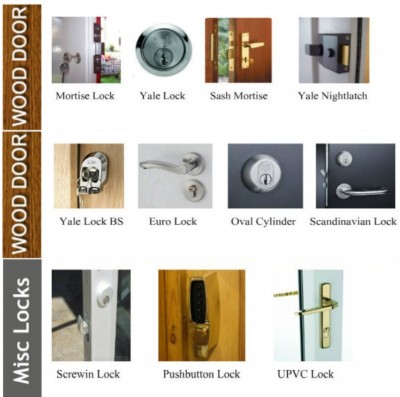
Another type of biometric lock is the iris scan lock, which scans the pattern of a person’s iris to grant access. The iris is a highly distinctive feature, making this type of lock extremely secure. The scan is quick and non-invasive, making it convenient for everyday use.
Voice recognition locks are also a popular type of biometric lock. These locks use advanced algorithms to analyze a person’s voice and authenticate their identity. They are easily integrated into smart home systems, allowing users to control access to their homes with their voice.
Facial recognition locks are another futuristic type of biometric lock. They use sophisticated cameras and algorithms to capture and analyze an individual’s facial features to grant access. This technology is becoming more widely used, especially in high-security areas such as airports and government buildings.
Biometric locks offer several advantages over traditional locks. They provide a higher level of security since the unique characteristics they use for authentication are difficult to forge or replicate. They also eliminate the need for traditional keys or codes, reducing the risk of lost or stolen access credentials.
As technology continues to advance, biometric locks are likely to become even more common in various applications. Whether it’s a cam lock, padlock, smart lock, magnetic lock, cylinder lock, deadbolt lock, or combination lock, the integration of biometric technology can greatly enhance the security and convenience of access control systems.
In conclusion, biometric locks offer a futuristic approach to access control, leveraging unique physical or behavioral characteristics to grant entry. This technology provides a higher level of security and convenience, making it an ideal choice for residential, commercial, and government applications.
Mortise Locks: Superior Strength and Durability
Mortise locks are a smart choice for enhanced security, offering superior strength and durability. These locks are commonly found in commercial buildings and high-security residential areas.
A mortise lock consists of several key components, including a cam, cylinder, and latch bolt. The cam is the part that turns when the key is inserted, allowing the latch bolt to move in and out of the door frame. The cylinder houses the key and can be replaced if needed. The latch bolt provides an additional layer of security, preventing the door from being forced open.
Mortise locks are known for their strength and durability. The mechanism is designed to withstand heavy use and provide reliable security. Unlike other types of locks, mortise locks are not easily compromised. They are resistant to picking, bumping, and other common methods used by intruders.
Furthermore, mortise locks can be enhanced with additional security features. Some models feature magnetic technology, making them more resistant to tampering. Electronic mortise locks are also available, offering keyless entry and remote access capabilities. These advanced features provide convenience without sacrificing security.
When it comes to choosing a lock, the deadbolt is often considered the gold standard. However, mortise locks offer a level of security that is comparable to a deadbolt. In fact, some mortise locks incorporate a deadbolt as part of their design, providing double the security.
In addition to their superior strength and durability, mortise locks also offer a sleek and stylish design. They can be customized to match the aesthetics of any door or building. Additionally, mortise locks can be combined with other types of locks, such as padlocks or combination locks, for an added layer of security.
In conclusion, mortise locks are a smart choice for those seeking enhanced security. Their superior strength and durability make them a reliable option for commercial and residential applications. With options for additional security features and a sleek design, mortise locks provide the perfect balance of functionality and aesthetics.
Cylinder Locks: Versatile and Easy to Install
Cylinder locks are one of the most common types of locks used for enhanced security. They are versatile and easy to install, making them a popular choice for both residential and commercial properties.
One of the main advantages of cylinder locks is their compatibility with various locking mechanisms. They can be used with different types of deadbolts, padlocks, smart locks, magnetic locks, cam locks, combination locks, and even biometric locks.
The cylinder lock consists of a cylindrical housing that contains the locking mechanism, which typically includes a rotating cam or latch. The key is inserted into the cylinder, which then turns the cam or latch to unlock or lock the door.
Installation of cylinder locks is relatively straightforward compared to other types of locks. They can be easily retrofitted into existing door systems or installed in new doors. This makes them a convenient option for homeowners or property managers who want to upgrade their security without undergoing major renovations.
Another advantage of cylinder locks is their versatility in terms of key options. They can be keyed alike, meaning that one key can operate multiple locks. This is particularly useful in cases where multiple doors in a building need to be locked and unlocked with a single key.
Cylinder locks also offer the option of keying different locks to different keys. This allows for greater control and security, especially in scenarios where different individuals or departments require access to specific areas.
Overall, cylinder locks are an excellent choice for those seeking enhanced security without the need for complex installations. Their versatility, ease of installation, and various keying options make them a reliable and convenient solution for both residential and commercial properties.
Combination Locks: Convenient and Reliable Security
When it comes to ensuring the safety of your belongings, combination locks are an excellent choice. These locks provide convenient and reliable security in a variety of settings.
Combination locks operate by using a series of numbers or symbols that must be entered in the correct sequence to unlock the device. This type of lock is commonly associated with padlocks, but can also be found in other forms such as cam locks and electronic locks.
One of the key benefits of combination locks is their versatility. Unlike biometric or smart locks, combination locks do not require any additional hardware or devices to operate. This makes them a cost-effective solution for securing various items, from lockers and safes to cabinets and luggage.
Combination locks are also known for their reliability. Unlike locks that rely on keys or electronic mechanisms, combination locks are not susceptible to failure due to mechanical issues or power outages. As long as you remember the correct combination, your belongings will remain securely locked away.
Furthermore, combination locks offer an added layer of security. With many combination locks, you can easily change the combination whenever you desire. This feature allows you to regularly update the code and prevent unauthorized access to your belongings.
There are various types of combination locks available on the market. Dial combination locks, for example, feature a rotating dial that allows you to line up the correct numbers or symbols to unlock the device. Push-button combination locks, on the other hand, require you to press a series of buttons in the correct order to release the lock.
In conclusion, combination locks provide a convenient and reliable security solution for a wide range of applications. Whether you need to secure your luggage, cabinets, or other valuable items, a combination lock can offer peace of mind knowing that your belongings are protected.
Rim Locks: Traditional and Efficient Locking Systems
Rim locks are a type of locking system that has been around for many years and is still commonly used today. These locks are typically installed on the surface of a door, rather than being set into the door like other types of locks. This makes them easy to install and replace, as they don’t require any complex modifications to the door itself.
One of the most common types of rim locks is the deadbolt lock. Deadbolts are known for their strength and durability, making them a popular choice for securing exterior doors. They feature a bolt that extends into the door jamb, providing an additional level of security and preventing the door from being easily kicked in.
Another popular type of rim lock is the smart lock. Smart locks are becoming increasingly popular due to their convenience and advanced features. These locks can be controlled remotely using a smartphone app, allowing homeowners to lock and unlock their doors from anywhere. Some smart locks even have features like keyless entry, allowing users to enter their homes using a keypad or their fingerprints.
Combination locks are another type of rim lock that are commonly used in various settings. These locks require a specific combination of numbers or letters to be entered in order to unlock the door. Combination locks are often used on safes, lockers, and other secure storage areas.
Cylinder locks are another type of rim lock that are commonly used in residential and commercial settings. These locks feature a cylinder with a keyway, which is inserted into the lock to operate it. Cylinder locks can be rekeyed easily, making them a convenient choice for situations where keys need to be changed frequently.
Biometric locks are a more technologically advanced type of rim lock. These locks use biometric information, such as fingerprints or retina scans, to unlock the door. Biometric locks offer a high level of security and are commonly used in locations where access needs to be tightly controlled.
Cam locks are a simple type of rim lock that are frequently used on cabinets, drawers, and other small storage areas. These locks feature a rotating cam that locks or unlocks the door when the key is turned.
Magnetic locks are another type of rim lock that use magnets to secure the door. These locks are commonly used in commercial settings, such as office buildings or hotels. They offer a high level of security and can be easily controlled using an access control system.
Finally, padlocks are a portable and versatile type of lock that can be used on a wide range of applications. These locks are designed to be attached to a hasp or a chain, providing a quick and easy way to secure items.
| Deadbolt | Strong and durable lock with a bolt that extends into the door jamb. |
| Smart lock | Lock that can be controlled remotely using a smartphone app. |
| Combination lock | Lock that requires a specific combination of numbers or letters to unlock. |
| Cylinder lock | Lock with a cylinder and keyway that can be easily rekeyed. |
| Biometric lock | Lock that uses biometric information, such as fingerprints, to unlock. |
| Cam lock | Simple lock with a rotating cam that locks or unlocks the door. |
| Magnetic lock | Lock that uses magnets to secure the door, often used in commercial settings. |
| Padlock | Portable and versatile lock that can be used in a wide range of applications. |
Q&A:
What are the different types of locks available for enhanced security?
There are several different types of locks available for enhanced security, including deadbolts, mortise locks, cylinder locks, keypad locks, and smart locks.
What is a deadbolt lock?
A deadbolt lock is a type of lock that can only be opened or closed by turning a key or thumbturn, and is usually more secure than other types of locks.
What is a mortise lock?
A mortise lock is a type of lock that is installed into the door itself, rather than on the surface. It offers a higher level of security and can be more difficult to pick or break.
What is a cylinder lock?
A cylinder lock is a type of lock that uses a cylindrical mechanism to lock and unlock. They are commonly used in both residential and commercial settings, and are available in various levels of security.
What are smart locks?
Smart locks are a type of lock that use wireless technology to connect to your smartphone, allowing you to lock or unlock your doors remotely. They often offer additional security features, such as remote monitoring and activity logs.
What are the different types of locks for enhanced security?
There are several types of locks that can enhance security, including deadbolts, cylinder locks, mortise locks, smart locks, and padlocks.
What is a deadbolt lock?
A deadbolt lock is a type of lock that can only be opened with a key or thumb turn from the inside. It offers a high level of security and is commonly used on exterior doors.

